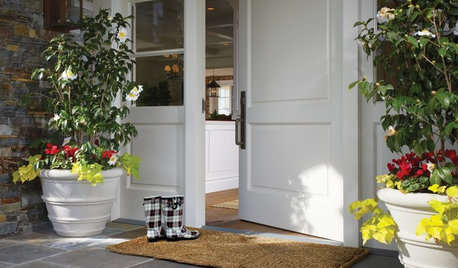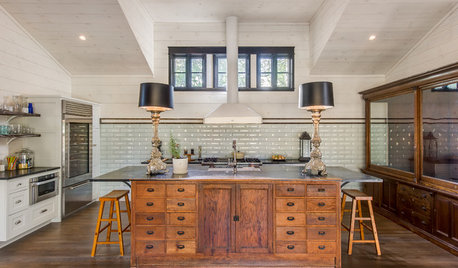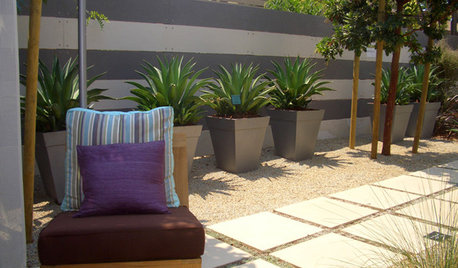Earth Auger to break up hard pan?
lubadub
10 years ago
Related Stories

MOST POPULARThe Polite House: On ‘No Shoes’ Rules and Breaking Up With Contractors
Emily Post’s great-great-granddaughter gives us advice on no-shoes policies and how to graciously decline a contractor’s bid
Full Story
HOMES AROUND THE WORLDTraditional Kitchen Opens Up and Lightens Up
Removing a wall was key to creating a large kitchen and dining space for family life in this London house
Full Story
LIGHTINGBreaking the Rules: Lamps Where You Least Expect Them
Amp up the wattage in your bathroom and kitchen with stylish lamps
Full Story
GARDENING AND LANDSCAPINGPermeable Paving Soaks Up Rain
Design garden hardscaping that allows rain to penetrate through to the earth below
Full Story
ARCHITECTUREWorld of Design: 10 Homes That Lap Up the Landscape Around Them
As building techniques develop, architects all over the globe are finding new ways — and new places — to integrate houses with nature
Full Story
LIFEGive Yourself a Break: 9 Resolutions That Are Easy to Keep
No DIY projects, cleaning, decluttering or guilt are required
Full Story
DECORATING GUIDES7 Design Rules and Why You Should Break Them
Think tile is only for kitchens and bathrooms? Art should hang at eye level? Time to consider breaking these old rules
Full Story
HOLIDAYSHouzz Call: When Do Your Holiday Decorations Go Up?
Is it ever too soon to start spreading the holiday cheer?
Full Story
GREEN DECORATINGBamboo Products — Earth Friend or Foe?
The ecofriendliness of this grass for flooring, wall coverings and furniture isn't cut and dried. Get the facts here
Full Story
DECORATING GUIDESFeel Free to Break Some Decorating Rules
Ditch the dogma about color, style and matching, and watch your rooms come alive
Full StoryMore Discussions






reginald_317
lubadubOriginal Author
Related Professionals
Surprise Landscape Architects & Landscape Designers · Forest Acres Landscape Architects & Landscape Designers · New Mexico Landscape Architects & Landscape Designers · Willowick Landscape Architects & Landscape Designers · Eureka Landscape Contractors · Fairhope Landscape Contractors · Clinton General Contractors · Rock Island General Contractors · Rossmoor General Contractors · Travilah General Contractors · American Fork Decks, Patios & Outdoor Enclosures · Boise Decks, Patios & Outdoor Enclosures · Fullerton Decks, Patios & Outdoor Enclosures · Mobile Decks, Patios & Outdoor Enclosures · Verde Village Decks, Patios & Outdoor Enclosuresryseryse_2004
reginald_317
lubadubOriginal Author
seysonn
fireduck
arley_gw
hoosier40 6a Southern IN
seysonn
fireduck
HU-549501111
Deborah lippitt
Mokinu
tete_a_tete